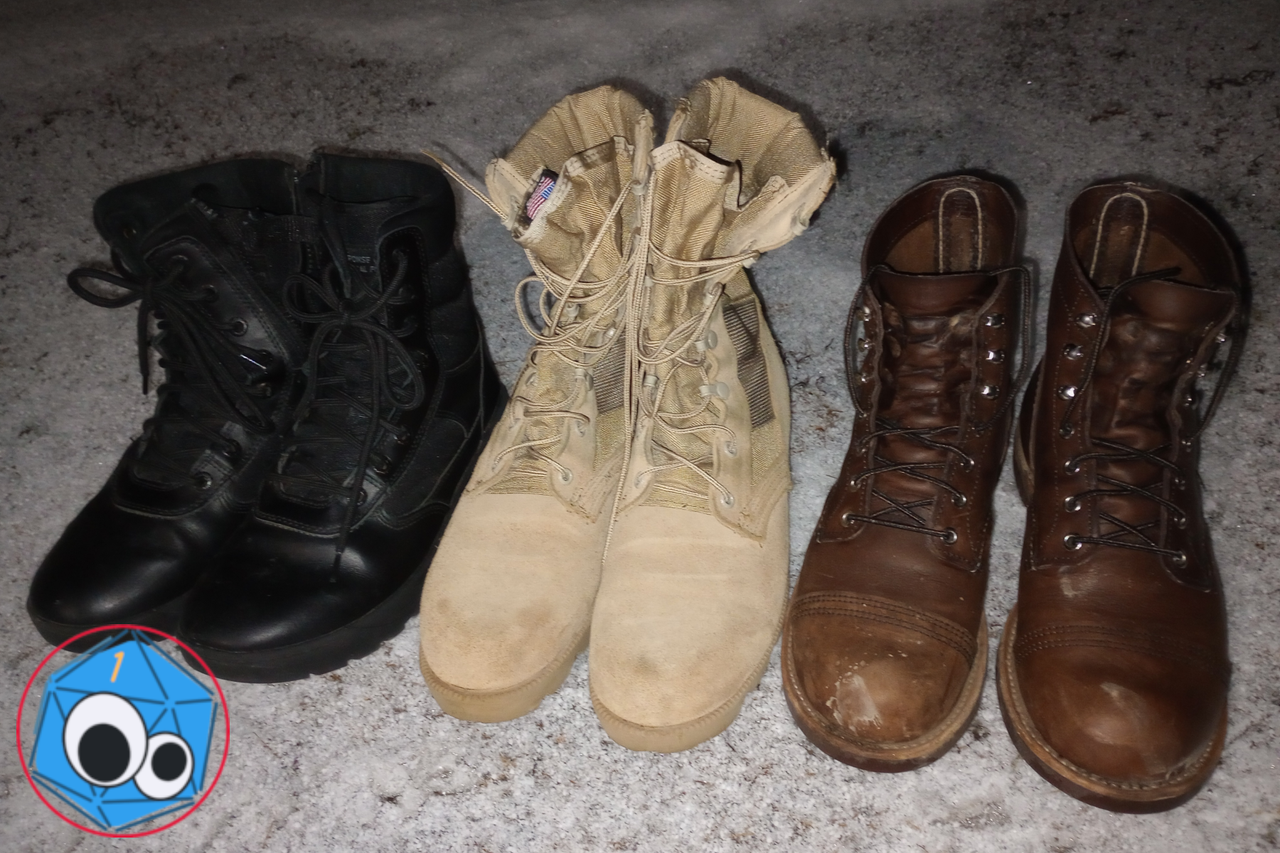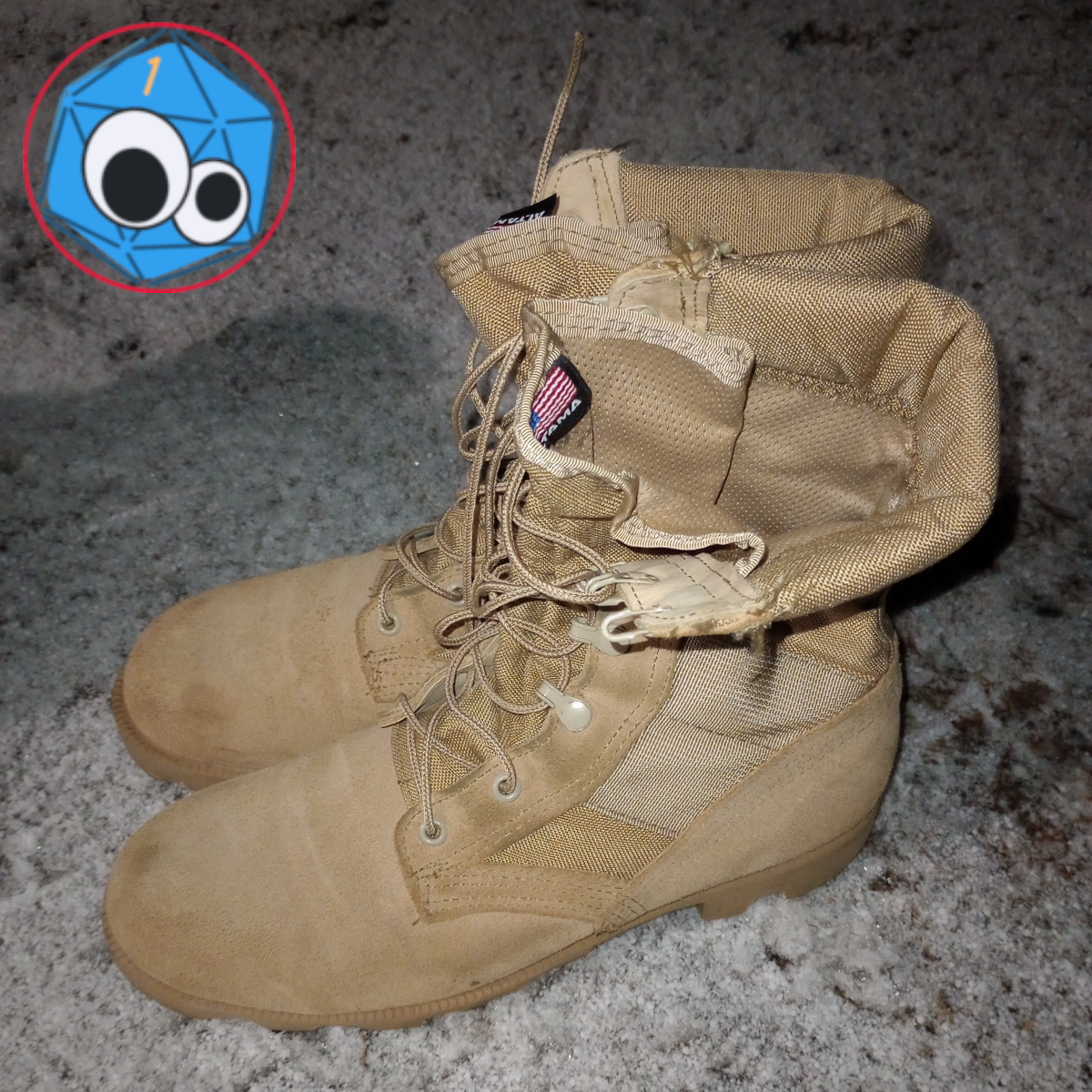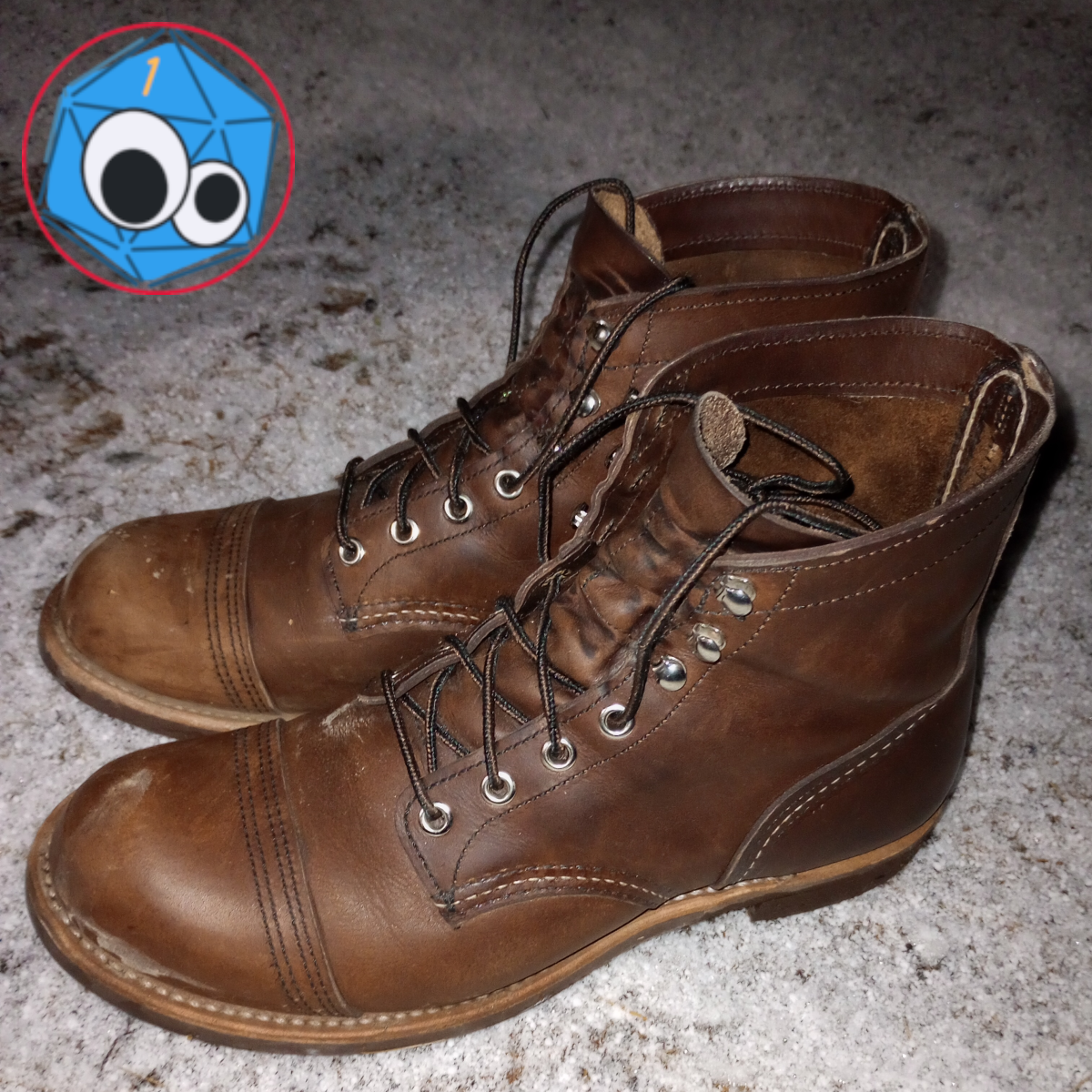Boots: Traditional, Military Surplus, and Budget Options
11 comments

Way back in September, I posted about a leather worker who critiques boots and shoes by cutting them in half and testing the materials. At the time, I wrote, "I think the next step in improving my day-to-day quality of life is buying a good pair of boots I can rely on for years." Well, I have bought a good pair of boots, worn them long enough to consider them broken in, and can now offer some personal opinions of the pros and cons of different styles of boot.
And no, it is not the Cowboy Crocs.
Response Gear
I have been buying these boots once or twice a year for over a decade from the regional sporting goods and shoes mecca, Big 5. If memory serves, they were only $29.99 at first. As of this post, they are "on sale" at $39.99.
Pros
- cheap price
- comfortable
- decent tread
- the zipper makes them easy to don and doff
Cons
- Cheap quality
- Not very sturdy
- poor materials do not last over time
- zippers are fragile

They pitch this boot as "tactical," but it really feels like an over-built high-top sneaker with a sturdier sole at first. It dresses down to business casual quite nicely. Unfortunately, it also breaks down inside and out. The sole is just glued onto the upper, and if that seam fails, the boot is dead. The heel is supported by thin columns of rubber, and if they collapse, the boot is dead. The leather may not be real leather, and it tends to crease and crack, wearing holes in the sides and the boot is dead. Also, the heel counter support tends to wear down and fall apart, and the boot is dead.
But with all these complaints, it isn't all bad news. they are cheap, reasonably water resistant for everyday wear, lined enough to be somewhat insulated for fall and even winter use for short periods, slip-resistant, and almost as comfortable as a pair of sneakers. I'm not saying not to buy these, I'm saying not to make them your main boot. I have worn them for work at the library, then demoted them to knocking around outside, and then to serious messy work only, so having a couple pairs in rotation for different jobs is quite feasible.
I have worn these in business-casual settings, on hikes, while operating lawn mowers and string trimmers, and to shovel snow. They do punch above their weight... until the glue fails, the heels collapse, the leather splits, or the zipper breaks. It's just not sustainable for me to keep replacing them time after time. But this pair (the newest of a long line) are currently the spare dry footwear I keep in my vehicle for emergencies.

Army Surplus
Military boots are an interesting niche subject where you can see the nexus of purpose, budget, and mass production in action. Sometimes the results are quite good. US boots have been developed from design principles dating back to World War I with iterative improvement since.
The usual boots in surplus stores are (or were last I checked) jungle boots first designed for the Vietnam War. They are built with a rugged lugged sole, a puncture-resistant plate, and a mixed leather and nylon upper. They have weep holes so water can flow out, and each step acts almost like a pump to keep trench foot at bay. For warm and potentially wet environments, they are not a bad option even today. I wore a pair when I was a member of the Young Marines back in my gung-ho patriotic youth.

The boots I bought more recently are a newer design, updating the green nylon and black leather with a desert tan color. The leather is rough-side-out for better wear resistance and reduced maintenance. There are no drain holes on these, since they are the temperate weather version. The soles still have the big mud lugs, though.
If I can find a pair that fits my feet, I am confident they would serve well for a long time. These have good arch support, partly because the heel is higher than the others and the sturdy sole is shaped well, so they should support heavier backpacking loads fairly well. They are designed for infantry with full combat loads, after all. The shaft provides less ankle support than I would like, but this also contributes to feeling more agile than the weight would suggest. They're by no means perfect, but they're not bad, especially as an upgrade from cheap boots while focusing on a budget. Just beware of knockoffs when exploring the surplus market.
Pros
- can be cheap
- reasonably comfortable
- very good tread
- much sturdier construction
Cons
- Quality can vary by manufacturer and age
- Not especially supportive around the ankle compared to other boots
- Can make you look like a tacticool jackass
Unfortunately, the boots I have are just not built for my feet. They are too snug in width and height at the ball of my foot. No amount of break-in seemed to fix it. Leather doesn't really stretch much, and wear only reshapes the material which is there in the first place. If I find a wide size for sale somewhere, I might give these a try again, but for now, these will have to find a new home.

Red Wing
The Pacific Northwest in general, and Spokane in particular, is home to some very serious boot-makers for loggers, firefighters, railroad workers, and other people who need the best boots money can buy for their jobs. They also command premium prices. There are other companies making boots using traditional materials and construction techniques across the US and around the world, though. As a Minnesotan, I feel a certain loyalty to Red Wing Shoes. So after some considerable research, I went on a boot-trying and boot-buying pilgrimage.
I'd like to take a moment to note how the internet is both a blessing and a curse when trying to research apparel. On one hand, there are folks like Weston at Rose Anvil who discuss quality and construction, the pros and cons, the give and take. On the other hand, a lot of reviewers are more interested in the aesthetic side of fashion with less useful information about what I actually care about.
My criteria for boots were roughly as follows:
Genuine leather. Synthetic materials have their place, but they just don't last. Vegans, I know you think leather is cruelty, but it's efficient to use everything in a critter, and natural materials like leather are often the most durable option.
Repairability. I wanted a boot that should outlast its sole, and can be resoled by a cobbler down the road.
Timeless style. I don't want to chase trends, I want something that has stood the test of time, something people have used for years and will use for years to come.
No lining. I don't need a waterproof boot, and besides, I don't trust waterproof linings to last, and I don't want my feet wrapped in plastic. I also don't like how fabric linings wear out over time. I'd prefer to wear heavy socks if I need more cushion and insulation.

I was planning to buy the Classic Moc wedge-sole moccasin toe work boots when I walked into the store, but they just didn't feel right. I decided to try on a pair of Iron Rangers on a whim, and... wow. I paid the clerk and walked out wearing them.
I have since worn them to work at the library as winter finally set in with snow. They are water-resistant enough for wet weather, and just this evening I stepped in several mud puddles without anything leaking in, but I wouldn't take them wading. The sole is slip-resistant on slick surfaces and plenty grippy on everything else. I helped push a stalled car in our parking lot and felt absolutely anchored to the ground even when really leaning into the work. I have also spent some time climbing ladders and doing other odd jobs where "real work" performance came into play. The steel shank is supportive on narrow rungs. The heel is also just enough to help lock my foot in place on rough terrain without feeling obtrusive.
Pros
- quality construction
- comfort
- very good tread
- durable (so far)
- repairable
- made in the USA
Cons
- EXPENSIVE! (about $380 after Washington State sales tax)
- comfort (Your mileage may vary)
- break-in is a thing (but not as scary as some said it would be)
- styling can be divisive
I do have a few more notes.
If you're accustomed to US sizes, you will need to go down at least half a size for these boots. UK sizing should be dead-on, but you may need to go up a half-step.
Traditional construction is a real change. These are definitely boots in stark contrast to Response Gear. I can see how sneakers got their name, because while the Iron Rangers aren't heavy, neither are they especially agile. I may not be done breaking them in, but I think they will always have a bit of a stompiness to the way they walk. The Vibram mini-lug sole is more than adequate for my needs, and performed better than I expected with mud, slush, and snow.
I will also note the absence of a removable insole, but I don't think it's really a problem. I don't feel like these exacerbate my preexisting back issues. I haven't taken these on a serious hike yet, so I freely admit this opinion may change. I'm also curious how they will feel when I'm carrying a backpack or riding a bike.
When trying on leather shoes, they should feel snug. Not tight, but definitely snug. With wear, the leather will flex and shape, but not really stretch as I noted on the surplus boots. It's also worth investing in some shoe trees to help maintain the shape and deodorize the inside while it dries.
I am already thinking about buying a second pair, perhaps sized down another half step and wider. These are great with warm winter boot socks, but I think summer and thin socks might not work as well. I'll have to think long and hard before I drop that kind of money a second time, though.

Closing Thoughts
Quality footwear is an investment. If you're on your feet a lot for work or recreation, the right boots or shoes are like the foundation supporting everything you do. There are tradeoffs in everything, so make an informed choice and be willing to spend a little extra. It will pay off in the long run. I'm reasonably confident these boots are the right ones for my needs now, but your mileage may vary. What boots would you trust to take you to hell and back?

Comments